Meet Darcie, the robot delivering dinner with a dash of Atlanta art and whimsy
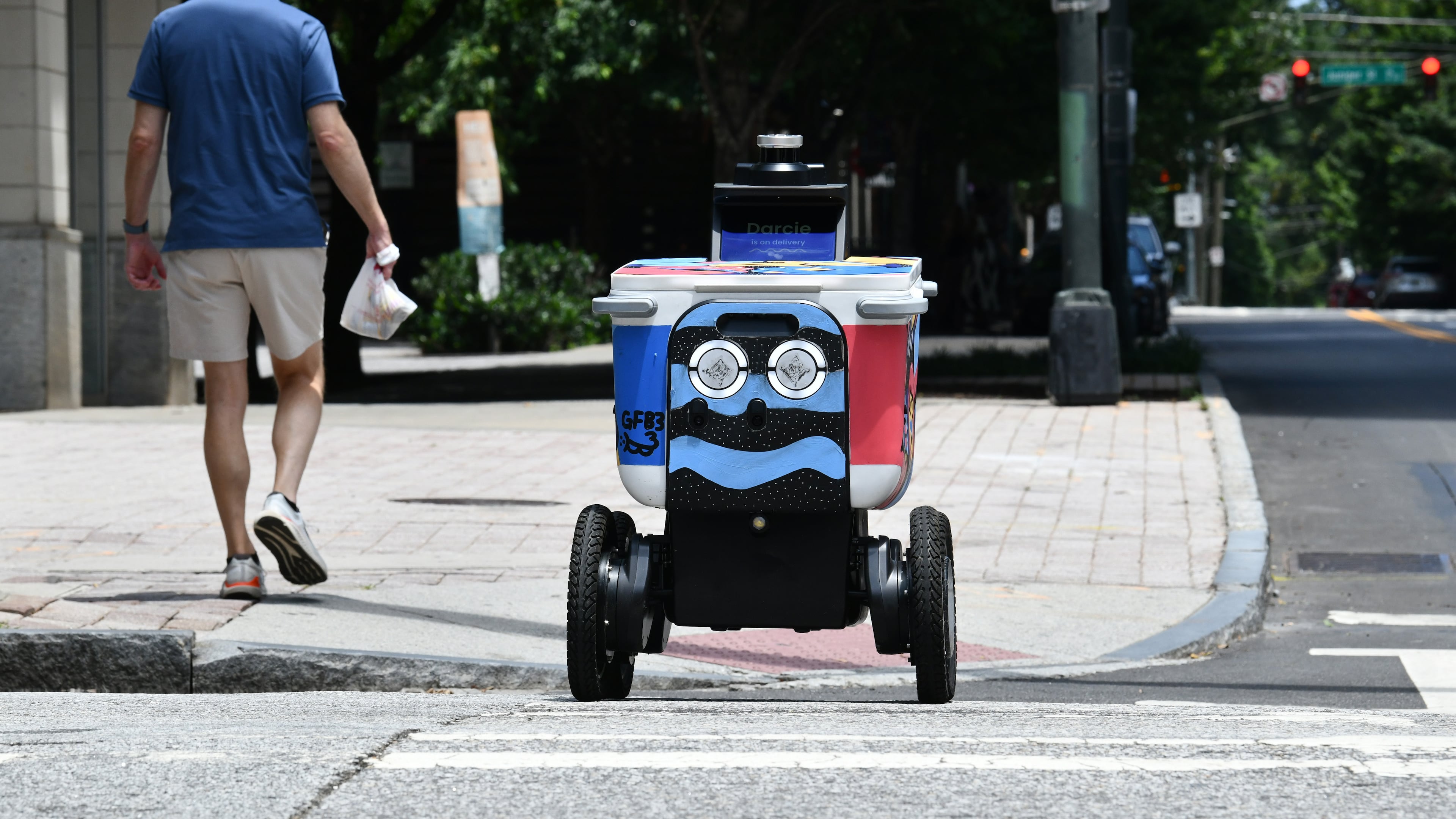
If you’ve taken a walk recently in Midtown, Old Fourth Ward or downtown Atlanta, you might have had a little unexpected company in the form of a roving robot.
Her name is Darcie. She has round, friendly eyes and wears a colorful mural by Atlanta-based artist and illustrator George F. Baker III.
She was created by San Francisco-based Serve Robotics and released to A-Town on June 26, along with a fleet of other robots like her.
Though there have been other delivery robots in private spaces in and around Atlanta, such as those that deliver drinks in bars or takeout orders on Georgia Tech campuses, Serve Robotics’ robots are among the first autonomous, public streetside delivery robots to operate in metro Atlanta.
Darcie’s role is to provide Atlantans munchies from one of three currently partnered locales: Rreal Tacos, Ponko Chicken and Shake Shack.
When diners order from one of these three restaurants through the Uber Eats app and are within a certain radius, they might be alerted that their courier will not be human. Rather, it will be darling Darcie or another robot like her.
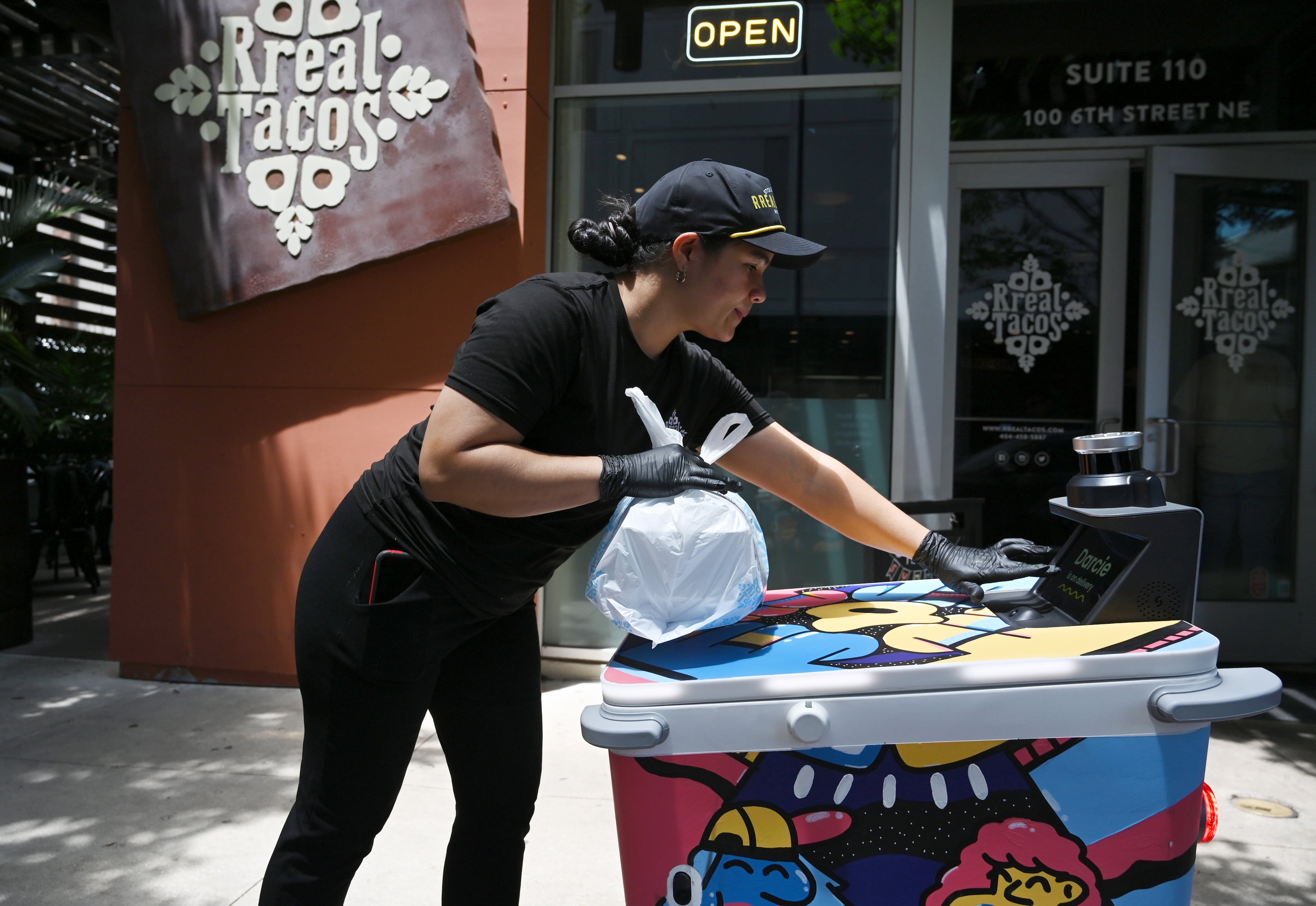
Serve Robotics declined to confirm how many of its robots deliver in Atlanta. The company did say it has committed contractually with Uber Eats over several years to deploy 2,000 delivery robots on the platform across multiple U.S. markets.
Atlanta is the company’s fourth major city, after robot releases in Los Angeles/West Hollywood, California; Dallas-Fort Worth, Texas; and Miami Beach, Florida.
Just as diners can track their food delivery made via a human-operated vehicle, they can track Darcie as she powers her boxy body up curbs, around telephone poles and by admiring onlookers on her way to her intended delivery address.
On arrival, customers meet Darcie on the sidewalk, where they use a code to unlock her lid and retrieve their food.
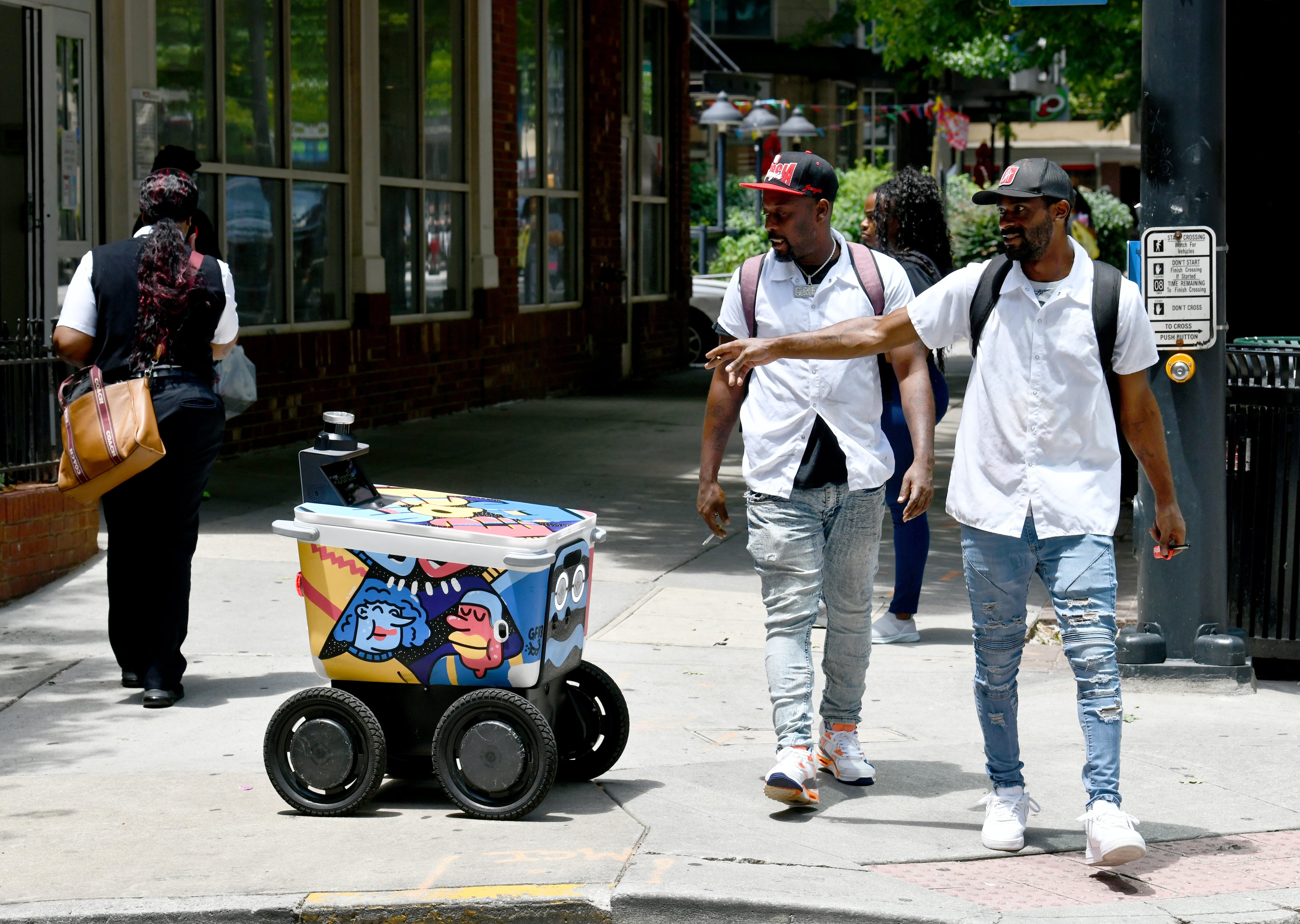
Delivered in style
If your food is delivered by Darcie, it will be delivered in extra style. She’s the only robot in the Serve Robotics fleet that has been painted by Baker, with bold blocks of color and the cartoonish outlines of faces. The forms, Baker said, are inspired by an amalgamation of Atlantans he’s seen out and about the city.
“I wanted to really celebrate what I think is one of the coolest things about Atlanta, which is the people,” he said.
Baker’s notoriety as an Atlanta muralist has been building momentum over the past few years. His colorful work is scattered throughout the city, including the large floral wrap across the street from the Midtown MARTA building, a mural in Adair Park and another at the Chick-fil-A on Northside Drive.
Most recently, he was commissioned by Deer Park Spring Water to create a mural at Summerhill Station near the old Turner Field as an homage to the neighborhood and Atlanta’s ties to baseball.
Baker also plans to launch an art studio and event space in Atlanta’s Underground in August.
When Aduke Thelwell, Serve Robotics’ head of investor relations and communications, first saw Baker’s work, she knew she had found the company’s artistic collaborator for Atlanta.
“George in particular just so resonated with our brand,” she said. “He has an accessible, fun, family-friendly, cartoonish style. It’s vibrant, it’s energetic, and he’s a muralist. He’s known for his pieces that are iconic to Atlanta. It was a natural synergy.”
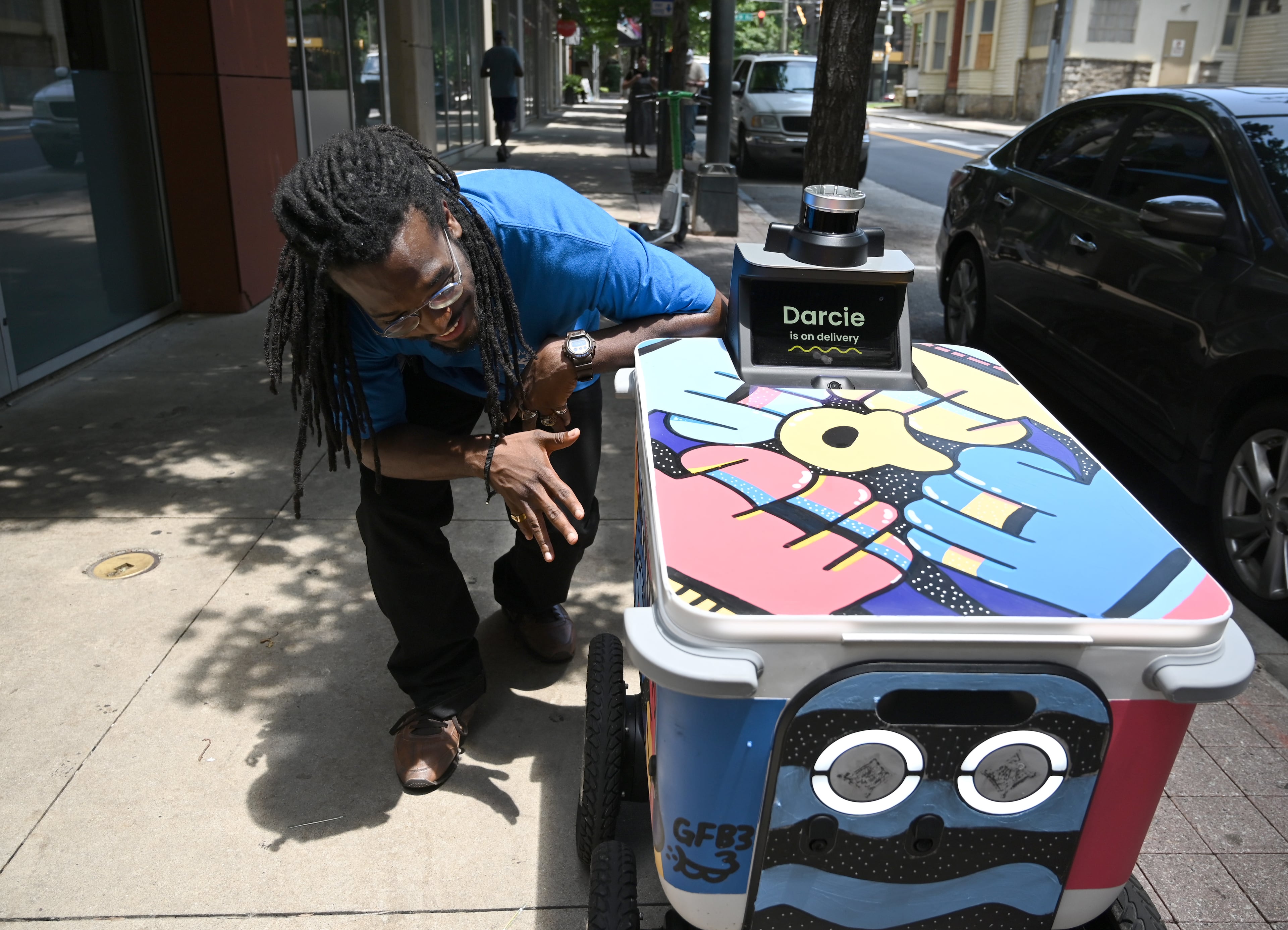
The first artist the company partnered with in 2023 and again in 2024 was Sküt (Scott Lewallen), known for creating immersive pop art, sculptures, murals and light installations across West Hollywood and Los Angeles. Sküt is recognized as an influencer in the LGBTQ+ community; he helped create the brand identity for Grindr, the gay social network.
Sküt painted Marsha, a rainbow-themed robot named after gay liberation rights activist Marsha P. Johnson. Marsha debuted by “marching” in the West Hollywood Pride Parade.
Partnering with local artists helps ensure “the robots are home in the cities that they belong to,” said MJ Chun, Serve Robotics’ co-founder and VP of product and design.
Tech and design
Chun and her team at Serve Robotics learned early on that robots need to feel personable.
“(The early version) looked a little scary if you didn’t know what it was. Here’s this box of metal and wire rolling toward you,” Chun said. “And that’s when we realized, no, it has to be delightful.”
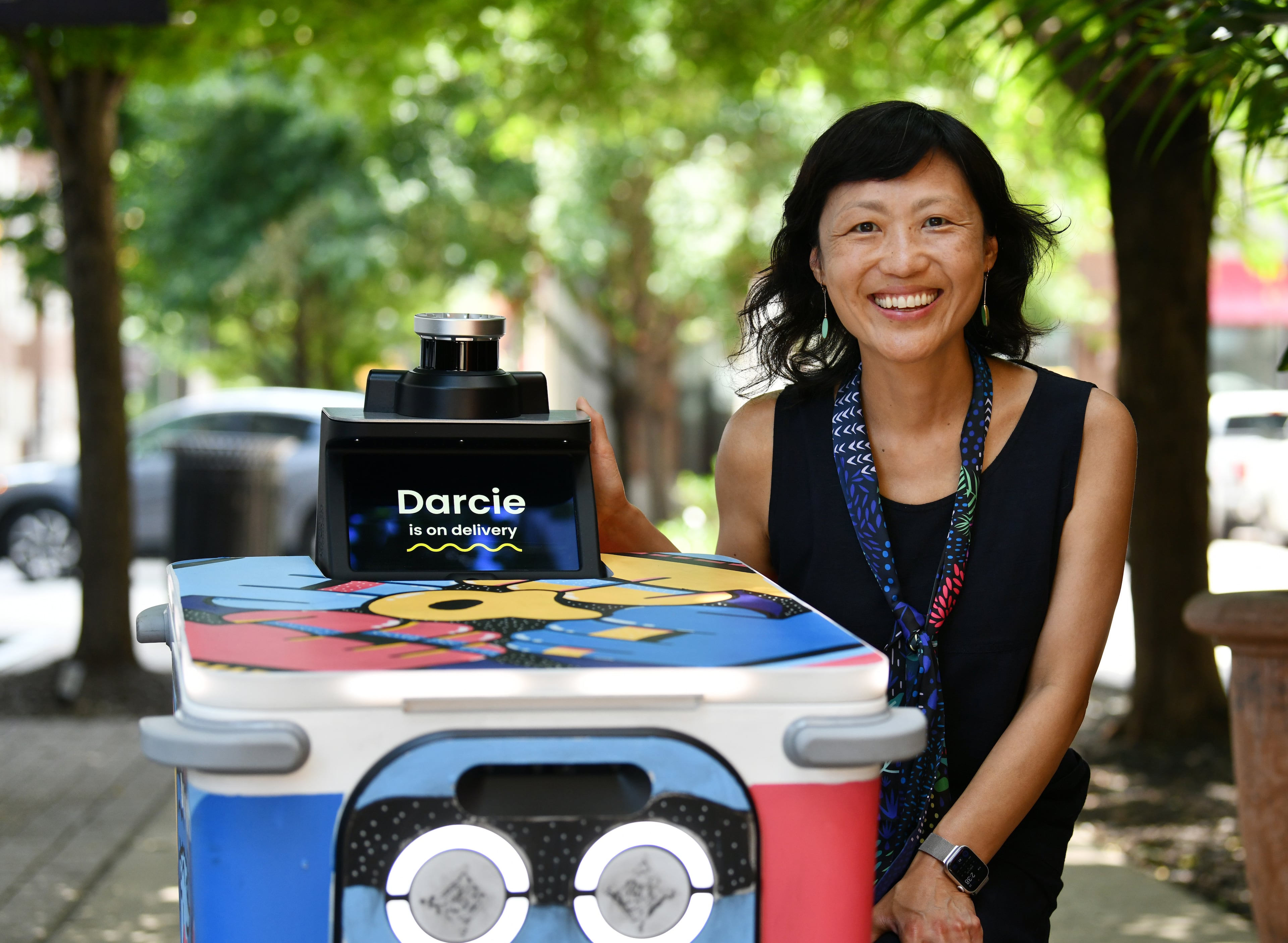
About eight years ago, one of Chun’s co-workers added giant googly eyes onto a toy truck.
“Immediately, it came to life,” Chun remembers.
The eyes on Serve Robotics’ robots have since become a signature of the brand.
“The eyes have been critical from a design perspective because not only do you know that the robot is alive, that it’s functioning, that it is a perceptive participant on the sidewalk, but it also gives you a simple thing like a sense of direction and which way the robot is going,” she said. “And then, of course, they provide personality.”
The robots all have personal names.
“Your burrito might come delivered by Holly, or it might be Forest or Jamal,” said Chun.
Before it was called Serve Robotics, Chun and her team were called Postmates X, which was the research, development and innovation department for Postmates from 2017 to 2019. Uber acquired Postmates in 2020 for $2.65 billion. In 2021, the Serve Robotics team spun out as its own independent company, partnering closely with UberEats Uber Eats and Nvidia.
The first robot iteration, which the team built in just five days, was less of a robot and more of a “phone jerry-rigged to an RC car,” Chun remembers laughing. “It’s always been about testing and iteration. … One of our core values is the truth is on the sidewalk.”
After the first prototype, the robot advanced to have a tele-operable rig with sensors and the beginnings of autonomy. Eventually, it transformed into what it is today: an autonomous, high-tech robot with character.
Serve Robotics’ robots use Ouster lidar for high-resolution 3D scanning, along with ultrasonic sensors, cameras and a global navigation satellite system to map their environment and chart a safe course.
Their “brains” are powered by Jetson Orin, a next-gen AI platform from tech giant Nvidia that processes what they see and hear and continually learns as more data is collected.
Although they are designed to be autonomous, if they run into trouble that requires human assistance, they can call for help. A team of remote human operators can tap into their systems and guide them out of a jam or find them in person.
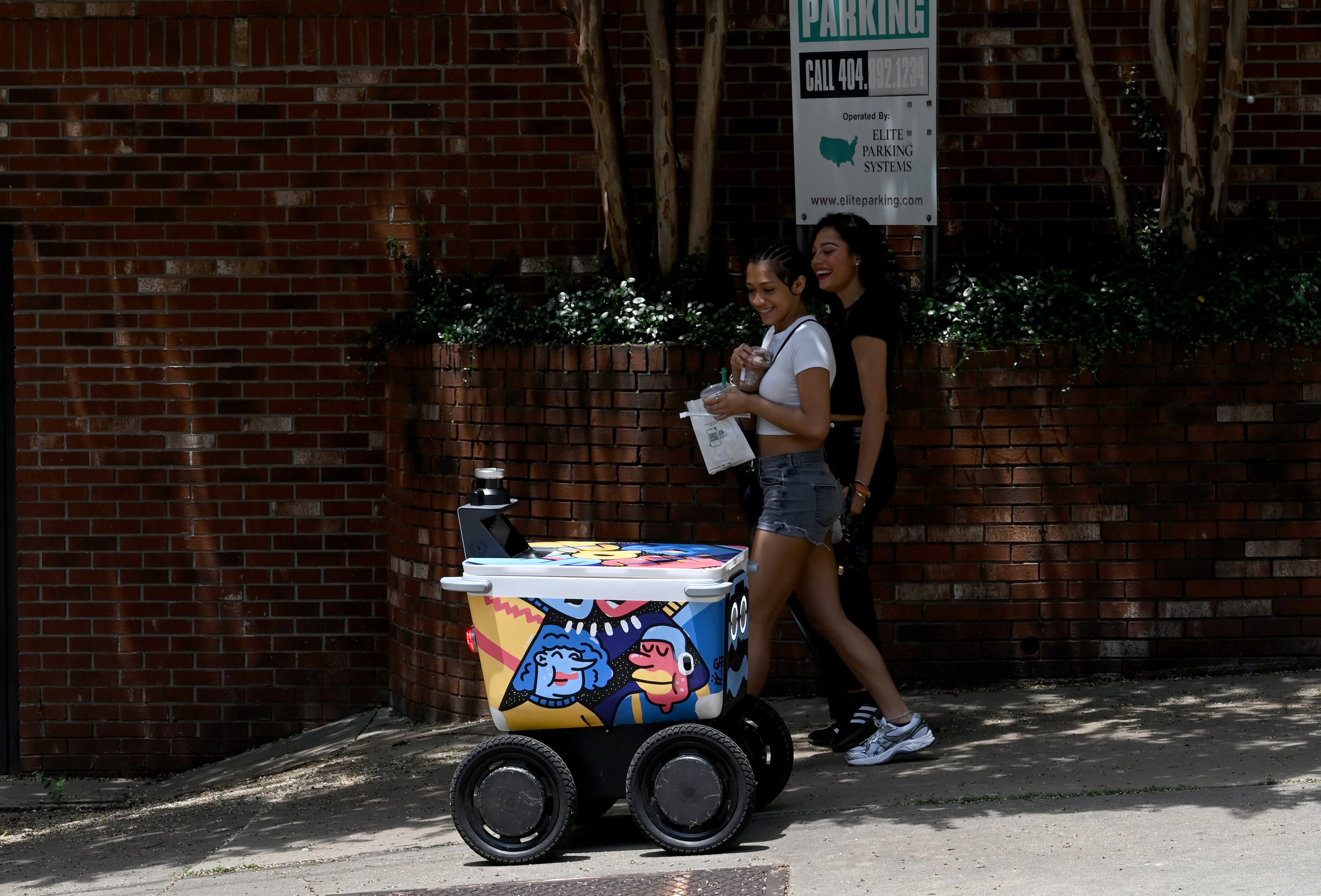
Proponents of bots like Darcie say they help reduce road traffic and pollution. Opponents point to vandalism and sidewalk congestion. But Chun said those worries are tackled with good robot programming.
“We train our robots to be good sidewalk citizens,” Chun said.
That includes training them on not hogging curb cutouts, giving space to bicycles, pedestrians and scooters, navigating intersections and keeping local pace.
“The way people walk might be different in certain parts of the city where you’re taking it a little slow and it’s a stroll, versus other parts of the city where people are in a little bit of a hurry,” Chun said. “Those are all things that, from a robot perspective, we’ve had to think about. It has to learn.”
As it learns, it contributes to a cloud-based brain of collective intelligence.
“Every time it goes down a sidewalk, it gets better,” said Chun. “It gets a little bit smarter.”
As she spoke, Darcie proved her point. The robot pulled up tight next to the railing of the outdoor patio at RReal Tacos in Midtown, where Chun and Baker sat sipping cold drinks. Darcie was getting out of the way of passing pedestrians.
Bakers’ eyes lit up. He pointed proudly.
“That’s Darcie,” he said. “That’s my girl.”

